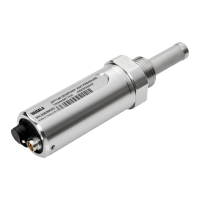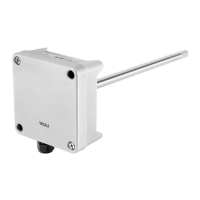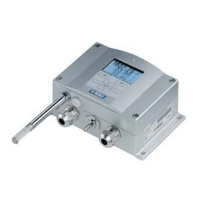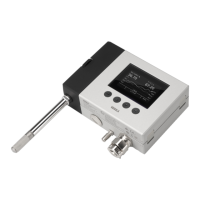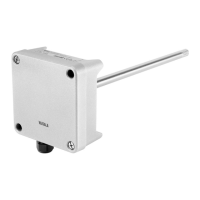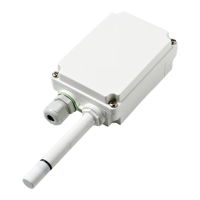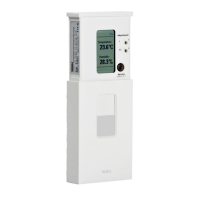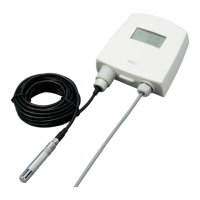3. Functional Description
3.1
Wind Measurement Principle
WXT536 WXT535 WXT534 WXT533 WXT532 WXT531
✔ ✔ ✔
The transmitters use Vaisala WINDCAP sensor technology for wind measurement.
The wind sensor has an arr
ay of three equally spaced ultrasonic transducers on a horizontal
plane. The unit determines wind speed and wind directions by measuring the time it takes
the ultrasound to travel from one transducer to the other two.
The wind sensor measures the transit time (in both directions) along the three paths
established by the array of transducers. The transit time depends on the wind speed along
the ultrasonic path. For zero wind speed, both the forward and reverse transit times are the
same. With wind along the sound path, the up-wind direction transit time increases and the
down-wind transit time decreases.
The unit calculates wind speed from the measured transit times using the following formula:
V
w
= 0.5 × L × (1/t
f
– 1/t
r
)
V
w
Wind speed
L
Distance between the two transducers
t
f
Transit time in forward direction
t
r
Transit time in reverse direction
Measuring the six transit times allows V
w
to be computed for each of the three ultrasonic
paths. The computed wind speeds are independent of altitude, temperature, and humidity,
which are cancelled out when the transit times are measured in both directions, although
the individual transit times depend on these parameters.
The V
w
values of two array paths are enough to compute wind speed and wind direction. A
signal processing technique ensures that wind speed and wind direction are calculated from
the two array paths with the best quality.
The wind speed is represented as a scalar speed in selected units (m/s, kt, mph, km/h). The
wind direction from which the wind comes is expressed in degrees (°). North is represented
as 0°, East as 90°, South as 180°, and West as 270°.
Chapter 3 – Functional Description
27
sales@streamlinemeasurement.co.uk
www.streamlinemeasurement.co.uk
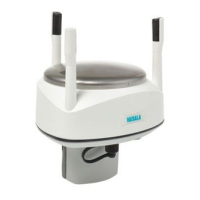
